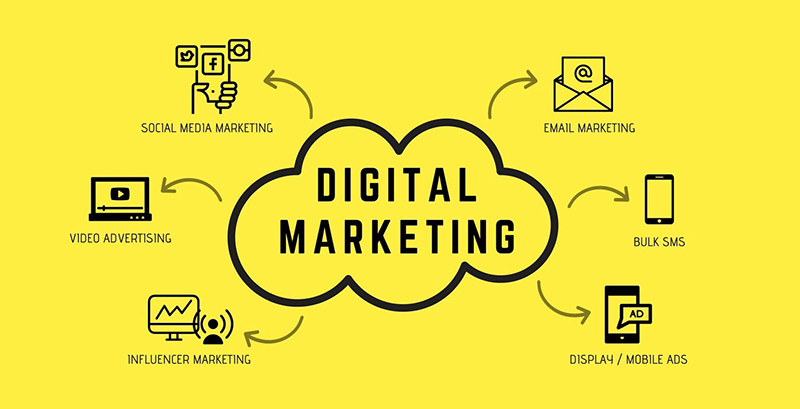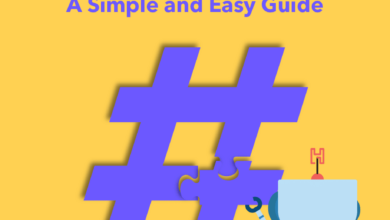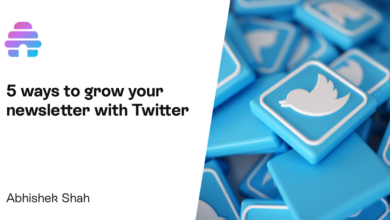
Marketing Tools for Designers Boost Your Brand
Marketing tools for designers aren’t just about fancy software; they’re your secret weapons to building a thriving design business. This isn’t about becoming a marketing guru overnight, but about strategically using the right tools to get your amazing work seen by the right clients. We’ll explore the best platforms, strategies, and even some sneaky tips to help you stand out from the crowd and attract your dream projects.
Get ready to level up your design marketing game!
From crafting a killer online portfolio to mastering the art of social media engagement and email marketing, we’ll cover all the essential aspects of promoting your design services effectively. We’ll delve into specific tools, analyze their features, and provide practical examples to help you implement these strategies immediately. This isn’t just theory; it’s a practical guide designed to help you achieve tangible results.
Top 5 Marketing Tools for Designers

Source: ibrand.id
Landing your dream design clients shouldn’t be a design challenge in itself! Effective marketing is crucial for designers of all stripes, from freelance illustrators to established UX/UI agencies. The right tools can streamline your efforts, making it easier to reach your target audience and convert leads into paying projects. This post highlights five powerful marketing tools specifically designed to boost a designer’s visibility and business.
Top 5 Marketing Tools: Features, Pricing, and Target Audience
Choosing the right marketing tools can feel overwhelming. To help you navigate this, I’ve compiled a table summarizing five excellent options, highlighting their key features, pricing, and ideal designer audience.
| Tool Name | Key Features | Pricing | Target Designer Audience |
|---|---|---|---|
| Canva | Intuitive graphic design tool, social media templates, brand kit creation, scheduling features. | Free plan available; Pro plans starting around $13/month. | Graphic designers, web designers, social media managers, all design levels. |
| Mailchimp | Email marketing automation, audience segmentation, campaign tracking, A/B testing, integration with other platforms. | Free plan with limitations; paid plans starting around $10/month. | All designers, particularly those building client lists and newsletters. |
| Adobe Portfolio | Professional online portfolio showcasing design work, easy customization, integration with Adobe Creative Cloud. | Included with Creative Cloud subscription. | All designers needing a professional online presence. |
| Professional networking platform, showcasing skills and experience, connecting with potential clients and collaborators. | Free basic account; premium options available. | All designers, particularly those seeking freelance or full-time roles. | |
| Visual platform for showcasing design work, engaging with potential clients, building brand awareness through visual storytelling. | Free; business accounts offer additional analytics. | Graphic designers, web designers, illustrators, product designers, and those with visually appealing portfolios. |
Usability and Effectiveness Across Design Specializations
The effectiveness of these tools varies depending on the design specialization. For example, Instagram’s visual focus makes it ideal for graphic designers and illustrators, allowing them to showcase their work directly. Conversely, LinkedIn might be more effective for UX/UI designers seeking corporate roles, leveraging its professional networking capabilities. Canva’s versatility benefits all designers, providing tools for creating marketing materials and social media content regardless of their niche.
Mailchimp’s email marketing capabilities are universally useful for nurturing leads and building client relationships across all design fields. Adobe Portfolio’s seamless integration with the Creative Cloud suite is particularly beneficial for designers already invested in the Adobe ecosystem.
Integration Capabilities with Design Software
Seamless integration is key to efficient workflow. Canva, for instance, integrates with various social media platforms, streamlining content scheduling and distribution. Mailchimp offers integrations with numerous CRM and marketing automation tools. Adobe Portfolio’s tight integration with Adobe Creative Cloud allows for effortless uploading and showcasing of projects directly from design software. LinkedIn doesn’t directly integrate with design software, but its capabilities are enhanced by showcasing a strong online portfolio (like one from Adobe Portfolio).
Instagram’s integration is largely about visual sharing, but tools like Later or Buffer can help schedule posts and manage multiple accounts effectively.
Utilizing Social Media for Design Marketing

Source: co.id
Social media is no longer optional for designers; it’s a crucial tool for building a brand, attracting clients, and showcasing your talent. A well-executed social media strategy can significantly boost your visibility and lead to more opportunities. This section explores how to leverage social media effectively to market your design services.
Instagram Content Calendar: One Month Plan
A consistent posting schedule is vital for maintaining engagement on Instagram. This sample calendar Artikels a month-long strategy focusing on variety and relevance. Remember to tailor this to your specific niche and audience.
| Day | Post Type | Theme | Hashtags (Examples) |
|---|---|---|---|
| Monday | Behind-the-scenes | Studio setup, work in progress | #designprocess #studiolife #graphicdesign #[yourniche] |
| Tuesday | Client work showcase | Completed project highlighting a key design element | #webdesign #branding #illustration #[clientindustry] #[yourstyle] |
| Wednesday | Tip/Tutorial | Short video or carousel post offering design advice | #designadvice #designtips #graphicdesigntips #[yourniche]tips |
| Thursday | Inspirational quote | Visually appealing quote related to design or creativity | #designinspiration #creativequotes #motivation #designlife |
| Friday | Community engagement | Ask a question to your audience, run a poll, or share user-generated content | #designcommunity #askmeanything #fridayfeeling #[yourniche]community |
| Saturday | Personal project showcase | Showcase personal work, experiments, or passion projects | #personalproject #passionproject #creativeexploration #[yourstyle] |
| Sunday | Reposting/Sharing | Repost content from other designers or relevant accounts | #[relevant hashtags] #designinspiration #repost |
Note: This is a template; adjust the frequency and types of posts based on your audience’s engagement. Experiment with different content formats (videos, carousels, reels) to see what resonates best.
Social Media Platforms for Specific Design Skills
Different platforms cater to different design styles and audiences. Choosing the right platform is key to maximizing your reach.
- Illustration: Instagram is ideal for showcasing illustrations due to its strong visual focus and large audience of art enthusiasts. Its features like Stories and Reels are perfect for process videos and behind-the-scenes glimpses. Behance is another strong contender, offering a portfolio-focused platform to showcase larger, higher-quality images.
- Web Design: Dribbble is a popular platform for showcasing web design work, focusing on short, visually impactful shots of designs. It’s known for its strong community of designers and provides opportunities for feedback and collaboration. LinkedIn, on the other hand, is excellent for connecting with potential clients and showcasing your professional experience and expertise in web development.
- Branding: Pinterest is a powerful visual search engine perfect for branding projects. Users actively search for visual inspiration, making it a valuable platform for attracting potential clients. Instagram also works well for showcasing branding projects, using high-quality images and videos to highlight brand identities and design processes. A strong brand presence on Instagram can lead to direct client engagement.
Advantages and Disadvantages of Paid Social Media Advertising
Paid advertising can significantly expand your reach, but it requires careful planning and management.
- Advantages: Targeted advertising allows you to reach specific demographics and interests, increasing the likelihood of connecting with potential clients who need your services. Paid campaigns offer measurable results, allowing you to track your ROI and optimize your spending. For example, a targeted Facebook ad campaign for a freelance web designer could focus on small businesses in a specific geographic area, increasing the chance of attracting relevant leads.
- Disadvantages: Paid advertising can be expensive, especially if you’re not experienced in managing campaigns. It requires ongoing monitoring and optimization to ensure you’re getting a good return on your investment. For instance, running a poorly targeted Instagram ad campaign for illustration work might lead to wasted budget and minimal engagement.
Email Marketing Strategies for Designers

Source: sasanadigital.com
Email marketing remains a powerful tool for designers to connect with clients, nurture leads, and showcase their work. A well-crafted email campaign can significantly boost brand awareness and generate new business opportunities. This section explores effective email strategies specifically tailored for the design industry, providing practical templates and best practices to help you maximize your email marketing efforts.
Three Email Templates for Designers, Marketing tools for designers
Crafting effective emails requires understanding your audience and your goals. Below are three distinct email templates, each serving a different purpose: a newsletter to engage your audience, a project announcement to showcase your work, and a client onboarding email to set expectations and build rapport.
Newsletter Template:
Subject: Design Inspiration & Insights – [Month, Year]
Body: Hi [Name], Welcome to the [Your Brand Name] newsletter! This month, we’re exploring [brief description of newsletter theme, e.g., minimalist design trends]. We’ve included [brief descriptions of content, e.g., a case study on a recent project, a link to a helpful design resource, and a sneak peek at upcoming work]. [Call to action: e.g., Read more here: [link]].
Project Announcement Template:
So, you’re a designer needing killer marketing tools? Building a strong online presence is key, and that means leveraging video. Check out this awesome guide on getting it on with YouTube to learn how to create engaging content. Once you’ve mastered video marketing, you can integrate it with other tools like email campaigns and social media scheduling for a truly powerful designer marketing strategy.
Subject: Fresh from the Studio: [Project Name] is Live!
Body: Hi [Name], We’re thrilled to announce the launch of our latest project, [Project Name]! [Brief description of the project and its key features, highlighting the design elements]. You can see the full project here: [link]. We’d love to hear your thoughts!
Client Onboarding Template:
Subject: Welcome to the [Your Brand Name] Team, [Client Name]!
Body: Hi [Client Name], Welcome aboard! We’re excited to be working with you on [Project Name]. This email Artikels the next steps: [List key steps, e.g., project kickoff call scheduled for [date and time], initial design concepts to be shared by [date], feedback deadline of [date]]. We’re committed to making this a smooth and successful collaboration. Please don’t hesitate to reach out if you have any questions.
Best Practices for Crafting Effective Email Subject Lines
Subject lines are the gateway to your email’s content. A compelling subject line dramatically increases the chances of your email being opened. Consider these best practices:
Effective subject lines are concise, clear, and create a sense of urgency or intrigue. They should accurately reflect the email’s content and appeal to the recipient’s interests. Using personalization, such as including the recipient’s name, can significantly improve open rates. A/B testing different subject lines helps determine which resonate most effectively with your audience.
- Keep it concise (under 50 characters).
- Personalize with the recipient’s name.
- Create a sense of urgency or intrigue.
- Use strong action verbs.
- Clearly communicate the email’s value proposition.
- A/B test different subject lines.
Strategies for Building an Email List Organically
Building a genuine email list takes time and effort. Focus on providing value to your audience and offering incentives for subscription. Here are some organic strategies:
Organic list building focuses on attracting subscribers who genuinely value your content and services. Avoid buying email lists, as this can harm your sender reputation and deliverability. Instead, focus on methods that build trust and engagement.
- Offer valuable lead magnets: Create free resources like design templates, ebooks, or webinars in exchange for email addresses.
- Utilize website signup forms: Place prominent signup forms on your website, making it easy for visitors to subscribe.
- Promote your newsletter on social media: Regularly share updates and snippets of your newsletter content on your social media channels.
- Run contests and giveaways: Incentivize sign-ups by offering a chance to win a prize.
- Network and collaborate: Partner with other designers or businesses to cross-promote your newsletters and expand your reach.
Networking and Collaboration for Designers
Building a strong professional network is crucial for designers seeking to grow their careers and businesses. Networking goes beyond simply exchanging business cards; it’s about cultivating genuine relationships that lead to mutual support, collaboration, and ultimately, more marketing opportunities. Attending industry events and actively engaging with fellow designers and clients offers invaluable benefits that extend far beyond the immediate event itself.Attending design conferences and workshops offers significant marketing advantages.
These events provide a concentrated environment for connecting with potential clients, collaborators, and mentors. Directly engaging with industry leaders provides insights into current trends and best practices, informing your own marketing strategies and enhancing your professional reputation.
Benefits of Design Conferences and Workshops
Design conferences and workshops provide a unique opportunity for professional development and networking. The concentrated atmosphere allows for efficient relationship building. Exposure to diverse perspectives and innovative design solutions sparks creativity and inspires new marketing approaches. Moreover, presentations and workshops often feature successful designers sharing their marketing strategies, providing valuable, actionable insights. Finally, simply being seen and recognized at such events elevates your professional profile within the industry.
Effective Networking Strategies at Industry Events
Successful networking requires a proactive approach. Prepare a concise and compelling elevator pitch that highlights your unique skills and design style. Actively listen to others, demonstrating genuine interest in their work and perspectives. Follow up after the event with personalized emails, reinforcing connections made and offering further collaboration opportunities. Participating in discussions and offering insightful comments during presentations establishes you as a knowledgeable and engaged member of the design community.
Remember, quality interactions are more valuable than quantity. Focus on building meaningful relationships rather than simply collecting business cards. For example, instead of rushing from one conversation to another, dedicate sufficient time to engaging in meaningful discussions with a smaller number of people.
Building Relationships for Mutual Promotion and Collaboration
Strong relationships with other designers and industry professionals are invaluable assets. Collaboration on projects expands your skillset and exposes you to new client bases. Mutual promotion through social media, referrals, and joint ventures can significantly broaden your reach and increase visibility. Consider forming strategic partnerships with complementary designers or businesses, leveraging each other’s strengths to offer comprehensive services to clients.
For instance, a graphic designer could partner with a web developer to offer a complete branding and website design package, creating a more compelling offering for potential clients than either could achieve individually. This synergistic approach generates greater marketing impact than individual efforts alone.
Measuring the Effectiveness of Design Marketing
So, you’ve put in the work – crafted compelling social media posts, designed eye-catching email campaigns, and networked tirelessly. But how do you know if your design marketing efforts are actually paying off? Measuring the effectiveness of your marketing is crucial for refining your strategy and maximizing your return on investment (ROI). It’s not just about vanity metrics; it’s about understanding what resonates with your target audience and what needs tweaking.
This section will delve into practical methods for tracking your progress and interpreting the data.Tracking Key Performance Indicators (KPIs) for Design Marketing SuccessUnderstanding which metrics to track is paramount. Focusing on the right KPIs provides clear insights into your marketing performance and allows for data-driven decision-making. Ignoring this step can lead to wasted time and resources. Here are some key metrics to consider:
- Website Traffic: Monitor unique visitors, page views, bounce rate, and time spent on site. Tools like Google Analytics provide detailed insights into traffic sources and user behavior.
- Social Media Engagement: Track likes, comments, shares, and follower growth on relevant platforms. Pay attention to which content performs best and adapt your strategy accordingly.
- Email Marketing Metrics: Analyze open rates, click-through rates, and conversion rates to assess the effectiveness of your email campaigns. Segment your audience to personalize messages and improve results.
- Client Acquisition Cost (CAC): Calculate the cost of acquiring a new client. This helps you understand the efficiency of your marketing spend and identify areas for improvement.
- Lead Generation: Track the number of leads generated through your marketing efforts, and analyze their conversion rate into paying clients. This helps to measure the effectiveness of your lead nurturing strategies.
- Brand Mentions: Monitor online mentions of your brand or name across various platforms to gauge brand awareness and reputation.
- Return on Investment (ROI): Calculate the return on your marketing investment. This requires tracking both marketing expenses and revenue generated from marketing efforts.
Interpreting Website Analytics to Understand Visitor Behavior and Campaign SuccessWebsite analytics platforms, primarily Google Analytics, offer a wealth of data about your website visitors. Understanding how to interpret this data is essential for optimizing your marketing strategy. For example, a high bounce rate might indicate that your website isn’t engaging visitors, prompting a redesign or content overhaul. Conversely, a low bounce rate with a high time-on-site suggests that your content is resonating with your audience.
Analyzing traffic sources (e.g., organic search, social media, email) reveals which channels are driving the most valuable traffic. Analyzing user flow within your website helps identify areas of friction and opportunities for improvement. Goal tracking, such as form submissions or purchases, allows you to directly measure the effectiveness of your marketing campaigns in driving conversions.Designing a Simple Spreadsheet to Track Marketing Campaign ResultsA simple spreadsheet can be a powerful tool for tracking your marketing campaign performance.
You can use tools like Google Sheets or Microsoft Excel to create a customized tracker.
| Campaign Name | Start Date | End Date | Website Traffic (Unique Visitors) | Social Media Engagement (Total Interactions) | Email Open Rate | Email Click-Through Rate | Leads Generated | Clients Acquired | Cost per Acquisition (CPA) | Return on Investment (ROI) |
|---|---|---|---|---|---|---|---|---|---|---|
| Social Media Campaign 1 | 2024-03-01 | 2024-03-31 | 1500 | 500 | 25% | 10% | 50 | 5 | $200 | 10% |
| Email Marketing Campaign 1 | 2024-04-01 | 2024-04-30 | 800 | 200 | 30% | 15% | 30 | 3 | $300 | 5% |
This simple table allows for easy tracking of key metrics across different campaigns. Remember to consistently update your spreadsheet to monitor progress and identify trends. You can add more columns as needed to track other relevant metrics. Analyzing the data within the spreadsheet will reveal which campaigns are performing well and which need adjustments. The data will also help inform future marketing decisions and optimize your budget allocation.
Outcome Summary
Ultimately, marketing your design skills effectively is about more than just having a great portfolio; it’s about strategically connecting with your target audience and consistently showcasing your unique talents. By utilizing the right tools, implementing smart strategies, and continuously learning and adapting, you can transform your design business from a passion project into a successful and fulfilling career. Remember, your design skills are exceptional – now let’s make sure the world knows it!
Questions Often Asked
What’s the best social media platform for showcasing graphic design?
It depends on your style! Instagram is great for visuals, Behance for professional portfolios, and Pinterest for inspiration boards. Experiment to see what works best for you.
How much should I spend on marketing as a new designer?
Start small and focus on organic strategies first (building your portfolio, networking). As your business grows, you can gradually invest in paid advertising.
How do I get clients to respond to my email marketing campaigns?
Personalize your emails, offer valuable content, and make sure your subject lines are compelling and relevant to your audience’s needs. A/B testing different subject lines and email content is key.
What are some free marketing tools for designers?
Many free options exist! Canva for graphics, free social media platforms, and email marketing services with free plans are good starting points. However, remember that paid options often offer more advanced features.





